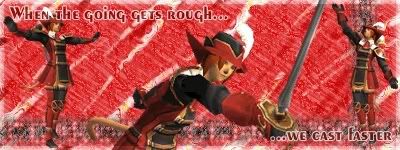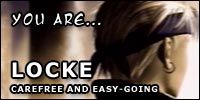Re: Choco baby colors
Here's how I'm interpreting the chocobo colors that we see in that shot.
Stage 1: egg and baby (only one model; everyone agrees they all look the same)
Stage 2: Yellow w/White tips (grows up to be plain yellow bird)
Yellow w/Black tips (Grows up to be the Black w/White tips adult)
Yellow w/purple tips (Grows up to be the Blue-ish w/pink tips adult)
Brown w/Yellow tips (Grows up to be a solid "Pure-bred" color)
Stage 3: Yellow (Plain Rouncy)
Black Adult w/White tips and brown beak (can parent either a Pure-Black Destrier and possibly a Pure-Green Jennet)
Indigo Adult w/Pink tips and beak (can parent both Pure-Blue Palfreys and Pure-Red Coursers)
Solid Black (Pure Destrier)
Solid Blue (Pure Palfrey)
Solid Red (Pure Courser)
Solid Green (Pure Jennet)
I'm pretty sure that we probably can't get a pure, solid colored chocobo with no color variations without first breeding some of the mixed colored adults. I get this from the fact that "colored" birds are supposed to be rare, and I doubt you could get one without plumbing the depths of all there is to chocobo raising/breeding.
Thus, I'm willing to bet that the two "mixed" colored adults are probably able to be bred to get one of 2 possible colors each. The Purple (it looked blue at first, but next to the bright blue choco, it looks pretty dang purple) probably can be bred with another Purple adult to get either a Palfrey or a Courser. By the same logic, I'm assuming that the mostly black adult with the brownish tipped beak and white tipped feathers may be able to be bred to produce a Destrier or a Jennet.
I'm really only going off of a child-like understanding of how colors blend, but it makes sense to me.
Edit: Pic that was linked in the first page changed so you'll just have to go by my descriptions.
Here's how I'm interpreting the chocobo colors that we see in that shot.
Stage 1: egg and baby (only one model; everyone agrees they all look the same)
Stage 2: Yellow w/White tips (grows up to be plain yellow bird)
Yellow w/Black tips (Grows up to be the Black w/White tips adult)
Yellow w/purple tips (Grows up to be the Blue-ish w/pink tips adult)
Brown w/Yellow tips (Grows up to be a solid "Pure-bred" color)
Stage 3: Yellow (Plain Rouncy)
Black Adult w/White tips and brown beak (can parent either a Pure-Black Destrier and possibly a Pure-Green Jennet)
Indigo Adult w/Pink tips and beak (can parent both Pure-Blue Palfreys and Pure-Red Coursers)
Solid Black (Pure Destrier)
Solid Blue (Pure Palfrey)
Solid Red (Pure Courser)
Solid Green (Pure Jennet)
I'm pretty sure that we probably can't get a pure, solid colored chocobo with no color variations without first breeding some of the mixed colored adults. I get this from the fact that "colored" birds are supposed to be rare, and I doubt you could get one without plumbing the depths of all there is to chocobo raising/breeding.
Thus, I'm willing to bet that the two "mixed" colored adults are probably able to be bred to get one of 2 possible colors each. The Purple (it looked blue at first, but next to the bright blue choco, it looks pretty dang purple) probably can be bred with another Purple adult to get either a Palfrey or a Courser. By the same logic, I'm assuming that the mostly black adult with the brownish tipped beak and white tipped feathers may be able to be bred to produce a Destrier or a Jennet.
I'm really only going off of a child-like understanding of how colors blend, but it makes sense to me.
Edit: Pic that was linked in the first page changed so you'll just have to go by my descriptions.

















Comment